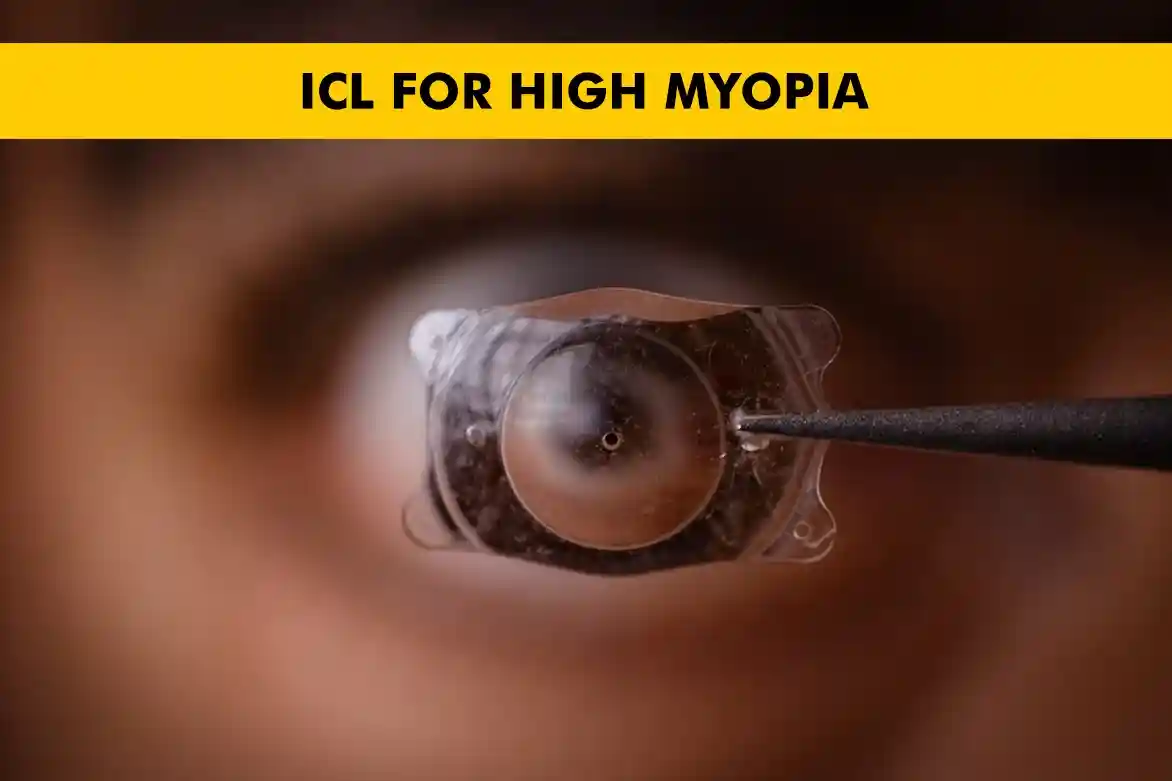Understanding High Myopia: Challenges and Limitations
High myopia, also known as severe nearsightedness, is a condition where distant objects appear blurry while close objects can be seen clearly. This condition often progresses rapidly and can lead to serious eye complications like retinal detachment, glaucoma, and cataracts. Traditional corrective methods such as glasses and contact lenses may not provide adequate vision correction for individuals with high myopia.
Moreover, surgical options like LASIK may not be suitable for patients with extremely high prescriptions or thin corneas. As a result, these individuals often face significant challenges in managing their vision and maintaining a good quality of life.
What Is ICL? An Overview of Implantable Collamer Lenses
Implantable Collamer Lenses (ICL) are a type of phakic intraocular lens that is implanted into the eye to correct vision. Unlike traditional contact lenses, ICLs are placed inside the eye between the iris and the natural lens, offering a permanent solution for vision correction.
Made from a biocompatible material called Collamer, ICLs are designed to work harmoniously with the eye’s natural structures. The procedure is reversible, and the lenses can be removed or replaced if necessary, making ICL a flexible option for those seeking long-term vision correction.
The Benefits of ICL for High Myopia Patients
For patients with high myopia, ICL offers several advantages over traditional corrective measures. First and foremost, ICL provides exceptional visual clarity and sharpness, often surpassing what can be achieved with glasses or contact lenses.
Additionally, the ICL procedure does not involve reshaping the cornea, making it a suitable option for individuals who are not candidates for LASIK. The lenses are also designed to protect the eyes from harmful UV rays, reducing the risk of further eye complications.
The ICL Procedure: What to Expect
The ICL implantation procedure is relatively quick and minimally invasive. It typically takes about 20 to 30 minutes per eye and is performed on an outpatient basis. Patients receive a local anesthetic to numb the eye, ensuring a comfortable experience during the procedure.
Following the implantation, patients may experience mild discomfort or blurred vision for a short period, but most can return to their normal activities within a few days. Follow-up visits are essential to monitor the eye’s healing process and ensure optimal results.
Real-Life Success Stories: Transformative Results with ICL
Many patients have experienced life-changing improvements in their vision after undergoing the ICL procedure. For instance, Sarah, a 32-year-old graphic designer, struggled with high myopia for most of her life. After receiving ICL implants, she now enjoys clear, crisp vision and no longer relies on thick glasses or uncomfortable contact lenses.
Similarly, John, a professional athlete, found that ICL allowed him to excel in his sport without the hindrance of corrective eyewear. These success stories highlight the transformative potential of ICL for individuals with severe myopia.
FAQs
ICL (Implantable Collamer Lens) is a lens inserted into the eye to correct high myopia. It sits between the natural lens and iris, focusing light on the retina for clearer vision without removing corneal tissue.
Candidates include those aged 21 to 45 with stable vision, severe myopia (usually -3.00 to -20.00 diopters), and individuals unsuitable for LASIK due to thin corneas or dry eyes.
ICL offers precise vision correction with minimal risks like dry eyes. It’s reversible, has quick recovery, and includes UV protection.
Risks are rare but may include increased intraocular pressure, cataracts, halos, glare, or infection. Your surgeon will assess suitability to minimize risks.
ICL lenses are designed to last a lifetime. If your prescription changes, the lens can be replaced with a new one. Regular check-ups are important for eye health.





